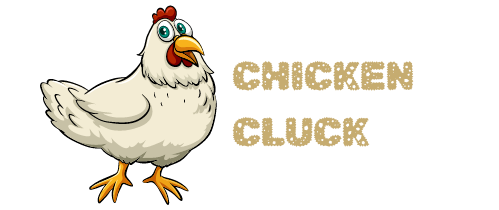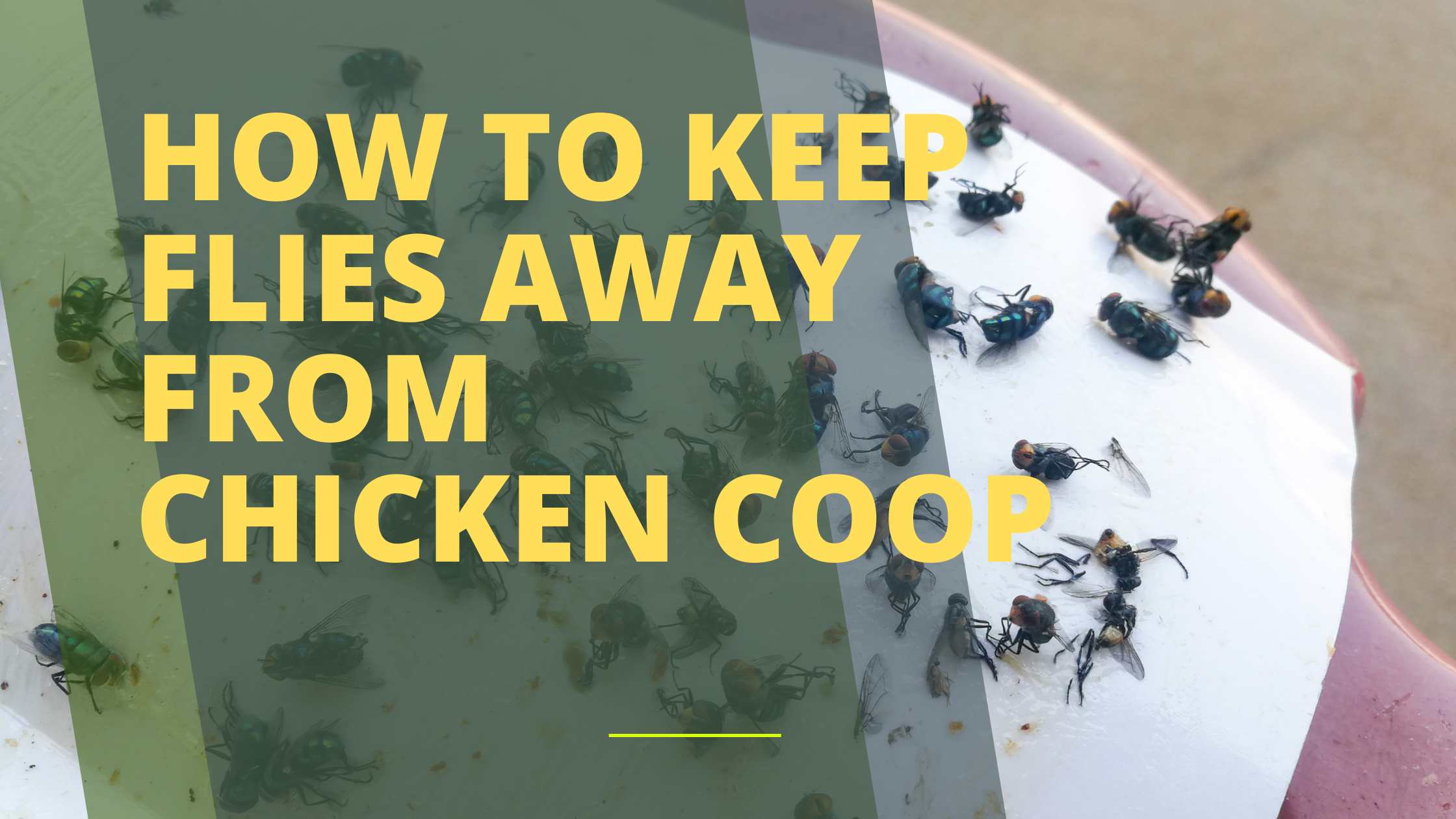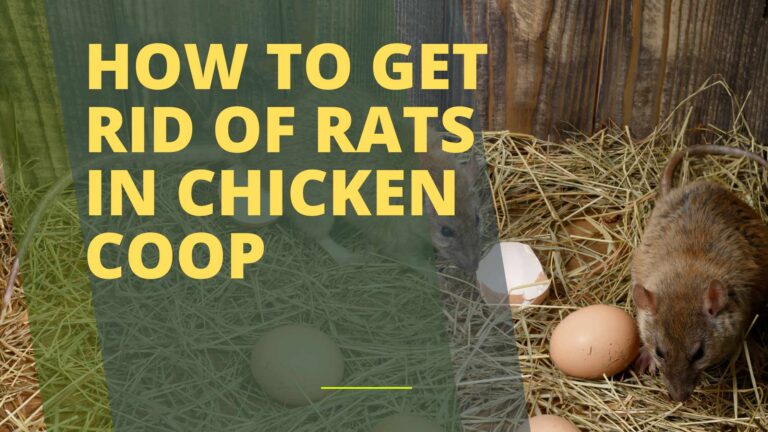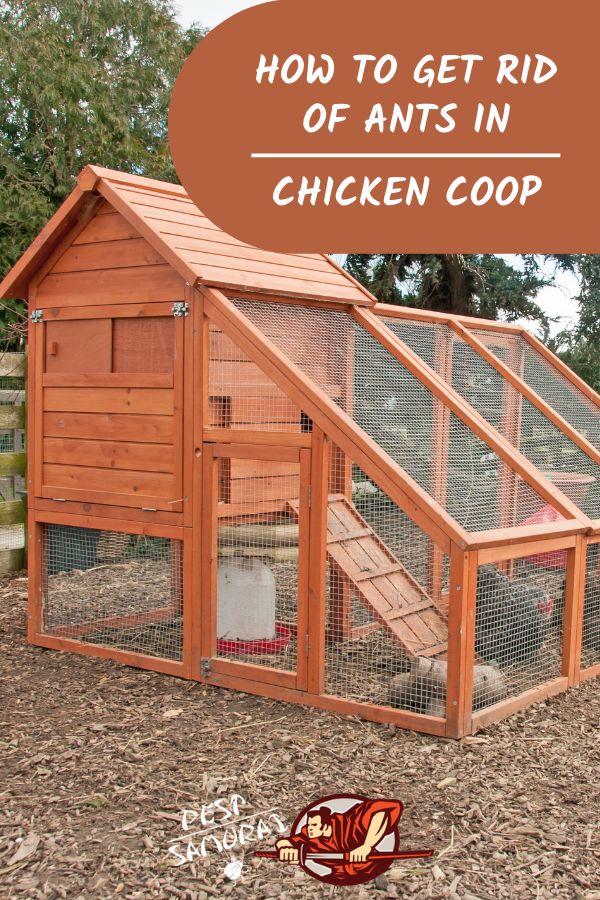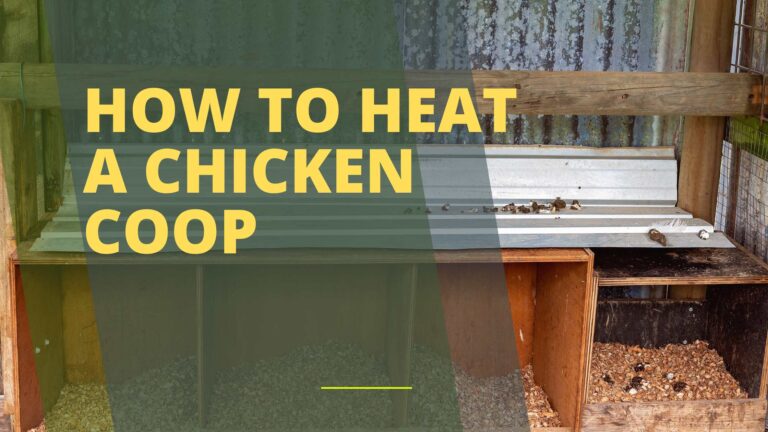Code: BD512CD
To keep flies away from a chicken coop, maintain cleanliness and use natural deterrents like herbs. Proper ventilation in the coop also helps to deter flies.
Raising chickens can be a gratifying experience, but dealing with flies around the coop presents a perennial challenge. These pests not only cause discomfort to your flock but can also spread diseases, affecting the overall health of your chickens. A clean coop is paramount; regular removal of waste and spoiled feed discourages flies from gathering.
How to Keep Flies Away from Chicken Coop? Implementing natural repellents such as mint, basil, or lavender can effectively dissuade flies without harming your birds. Ensuring the coop has good airflow aids in keeping the environment dry and less attractive to these insects. It’s essential to strike a balance between effective fly control measures and maintaining a safe, chemical-free habitat for your chickens.
The Fly Menace In Chicken Coops
The Fly Menace in Chicken Coops is a common problem for backyard poultry enthusiasts and commercial farmers alike. Flies are not only annoying but they pose serious health threats to your feathered friends. Understanding how to tackle this issue helps maintain a healthy coop environment.
Health Risks For Chickens
Flies can carry diseases. They spread infections to chickens. These diseases can range from mild to deadly. The risk increases in warm months. Here are some fly-borne illnesses:
- Salmonella: Causes diarrhea in chickens.
- E. coli: Leads to severe respiratory problems.
- Avian flu: A dangerous viral infection.
Maintain coop cleanliness to minimize these risks. Regularly remove wet bedding and manure. This deters flies from breeding.
Impact On Egg Production
Flies stress chickens. Stressed chickens lay fewer eggs. It’s important for egg quality and quantity to control the flies. Use these strategies:
- Cover feed and water containers to keep flies out.
- Install fly traps around the coop.
- Use natural repellents like herbs to deter flies.
Monitor egg production to gauge the fly issue. A sudden drop means take action.
Sanitation Practices To Reduce Fly Populations
Keeping your chicken coop free of flies is crucial for your flock’s health and your comfort. Flies can spread diseases and cause stress to your chickens. Good sanitation practices help keep fly populations low. Learn some effective ways to keep flies at bay.
Regular Coop Cleaning
- Remove droppings daily to minimize odors and fly attractants.
- Scrub feeders and waterers weekly. Use a mix of water and vinegar for a natural clean.
- Replace bedding often. Choose materials like straw or sand that dry quickly and reduce odor.
- Perform deep cleaning monthly. Disinfect the coop thoroughly to eliminate fly larvae.
Proper Waste Management
| Action | Benefits |
|---|---|
| Compost Manure | Reduces waste and odors that attract flies. |
| Cover Trash Bins | Keeps flies from breeding in garbage areas. |
| Separate Waste | Organize into bins to limit fly access. |
| Regular Disposal | Prevents fly populations from growing. |
Feed And Water Management Strategies
Keeping flies away from your chicken coop requires smart strategies. One effective approach is managing feed and water properly. Below, discover the right tactics to prevent fly infestations through feed and water management.
Secure Feed Storage
Secure feed storage is crucial to stop flies from invading. Flies love chicken feed. When the feed is open, flies swarm in. To keep the feed safe, use these tips:
- Store feed in bins with tight lids. This keeps flies out.
- Keep bins inside, away from direct coop areas.
- Check for spills and clean them up quickly.
Keeping Water Sources Clean
Clean water is vital for healthy chickens and avoiding flies. Flies reproduce in dirty water. To keep water clean, follow these steps:
- Change water daily. Fresh water reduces fly attraction.
- Clean water containers once a week to stop algae and eggs.
- Use water systems like nipple drinkers to minimize spillage.

Credit: www.ruralsprout.com
Physical Barriers For Fly Control
Physically barring flies from entering a chicken coop remains a critical step. Effective fly control protects your flock’s health and maintains a cleaner coop environment. Below, discover how to enhance your chicken coop’s defenses with physical barriers designed for fly control.
Benefits Of Screens And Netting
Screens and netting serve as the first line of defense. By installing these on windows and coop entrances, many advantages emerge:
- Prevents entry: Blocks flies from coming inside.
- Good airflow: Lets in fresh air, keeps chickens cool.
- Durable: Strong materials last long, withstand pecks.
- Easy to install: Attach quickly with staple guns or nails.
Using Fly Traps Effectively
Pairing physical barriers with fly traps enhances coop protection. Effective fly trap positioning is key.
- Place traps near coop entrance.
- Change traps often to stay effective.
- Combine with attractants for better results.
Eco-friendly traps catch flies without chemicals. Safe for chickens, easy for owners.
| Type of Trap | Location | Attractant Used |
|---|---|---|
| Sticky Traps | Near feeders | Bait sachets |
| Bottle Traps | Coop corners | Vinegar mix |
Natural Fly Repellent Solutions
Flies buzzing around the chicken coop can turn from a minor nuisance to a major problem.
They carry diseases and upset the health and comfort of your feathered friends.
Using natural fly repellent solutions keeps chickens happy without harmful chemicals.
Herbal Deterrents
Herbs are much more than seasonings for your Sunday roast.
They make excellent fly repellents around the coop.
- Basil – Plant it around the coop or place pots inside.
- Lavender – Its soothing scent blocks out the flies.
- Mint – Spreads easily and keeps the area fly-free.
- Marigold – Plant these bright flowers to repel flies.
Simply hang dried bunches or fresh sprigs near the coop areas most affected by flies.
Diy Vinegar Fly Repellents
Vinegar is a kitchen staple with impressive fly-fighting abilities.
Create a DIY vinegar fly repellent with common ingredients.
| Ingredient | Amount | Instructions |
|---|---|---|
| Apple Cider Vinegar | 1 Cup | Mix with water in a spray bottle. |
| Dish Soap | 3 Drops | Add to vinegar solution to break surface tension. |
| Sugar | 1/4 Cup | Blend with vinegar mix to attract and trap flies. |
For best results, place this blend near the coop but out of chicken’s reach.
Reapply the spray every few days or after rain.

Credit: www.muranochickenfarm.com
Biological Control Agents
Fighting fly infestations in chicken coops can be a challenge. Biological control agents offer a natural, effective way to manage these pests. These agents include beneficial predators and insects that target and reduce the fly population. Below we will discuss various biological strategies that can help maintain a fly-free environment for your chickens.
Introducing Predators
Predators like birds and beetles serve as natural fly control. They feed on fly larvae and adults, keeping populations in check. By encouraging these helpful predators to visit your chicken coop, you create a self-regulating pest system. Here are ways to attract these allies:
- Install birdhouses to attract insectivorous birds.
- Create beetle banks where ground beetles can thrive.
- Avoid using pesticides that might harm these beneficial species.
The Role Of Parasitic Wasps
Parasitic wasps are nature’s secret weapon against flies. These tiny wasps lay eggs inside or on fly larvae. The wasp larvae feed on the fly from the inside, eventually killing it. Introducing these wasps to the coop environment can significantly reduce fly numbers. Here’s what you need to know:
| Wasp Type | Target Fly Stage | How to Introduce |
|---|---|---|
| Muscidifurax | Pupae | Purchase pupae and release near coop. |
| Spalangia | Pupae | Place wasp pupae in dispenser containers. |
| Trichogramma | Eggs | Distribute cards with wasp eggs around the coop. |
Chemical Repellents And Insecticides
Dealing with pesky flies around chicken coops can be frustrating. Chemical repellents and insecticides are effective options for keeping these bothersome insects at bay. However, choosing the right products and applying them correctly is crucial for the safety of your chickens and the effectiveness of the repellents.
Selecting Safe Products
Finding safe and appropriate chemical products is critical. Here are points to consider:
- Non-toxic labels: Make sure the products are labeled as non-toxic to animals.
- Poultry-safe: Look specifically for products that mention safety for poultry use.
- Active ingredients: Check the active ingredients and confirm they’re not harmful to your chickens.
Application Tips For Effectiveness
Application techniques can make a significant difference. Some important tips include:
- Dilution: Follow the product’s dilution instructions closely for optimal effectiveness.
- Frequency: Reapply as indicated, often after rain or cleaning the coop.
- Targeted areas: Focus on areas where flies are most prevalent, like waste disposal sites.
Always wear protective gear and keep chickens out of the coop during application to ensure safety.
Regular Monitoring And Maintenance
Keeping flies away from a chicken coop demands both diligence and consistency. A clean and well-maintained coop deters flies, maintaining a healthy environment for the chickens. Regular monitoring and proper maintenance form the backbone of effective fly control strategies. A good routine ensures that your chicken coop remains a no-fly zone.
Setting Up A Cleaning Schedule
Creating a regular cleaning schedule is critical for a pest-free coop. Stick to a timeline that keeps your coop tidy:
- Daily: Remove leftovers and turn bedding.
- Weekly: Clean feeders and waterers.
- Monthly: Replace bedding and scrub coop.
Assessing Fly Control Measures
An assessment of fly control measures ensures a practical approach:
| Control Measure | Effectiveness |
|---|---|
| Traps | Check if full or placed correctly. |
| Natural repellents | Monitor plant health and placement. |
| Chemical deterrents | Reapply as needed, follow safety guidelines. |
Regular checks help identify issues before they escalate. Take notes on what works and adjust your strategy accordingly.
Adapting Coop Design To Discourage Flies
Flies near your chicken coop can be a nuisance and a health risk for your chickens.
Changing the design of your chicken coop helps keep these pests away.
Advantages Of Good Ventilation
Good airflow plays a crucial role in keeping flies at bay.
Properly implemented ventilation lets fresh air in and pushes stagnant air out.
Not only does this reduce moisture and odor that attracts flies, but it also keeps chickens healthy.
- Install vents on opposite sides for cross-ventilation
- Use wire mesh to prevent pests while allowing air flow
- Place roof vents to release rising hot air
Coop Orientation And Sunlight Exposure
Flies thrive in dark and damp areas.
Positioning your coop to maximize sunlight exposure helps keep these areas dry.
| Coop Side | Function |
|---|---|
| East-facing | Catches morning sunlight |
| West-facing | Receives afternoon sun |
Sunlight is also a natural disinfectant, helping to kill bacteria that may attract flies.
Community Cooperation In Fly Management
Dealing with flies near chicken coops is a challenge.
But it’s easier when the whole community works together.
Getting everyone involved keeps flies away.
Engaging Neighbors In Fly Control
Flies don’t just stay in one place.
They move around, especially in neighborhoods.
Working with neighbors is key to controlling them.
Start a community meeting about fly issues.
- Discuss chicken coop upkeep.
- Share tips on clean coops.
- Offer help to build fly traps together.
The Importance Of Area-wide Management
Flies can become a bigger problem if not managed by everyone.
Area-wide management means all yards must stay clean.
Together we can reduce the fly population.
Ensure every coop in the area is properly maintained.
- Set a regular coop cleaning schedule.
- Use fly predators that eat fly larvae.
- Place fly traps in strategic locations.
Conclusion
Keeping flies at bay in your chicken coop is essential for your flock’s health and comfort. Employing these methods will foster a cleaner environment, deterring pests effectively. Remember, consistency is key—regular coop maintenance paired with the right strategies can create a fly-free zone for your chickens.
Start today, and enjoy a thriving, pest-controlled hen house.
Code: BD512CD
